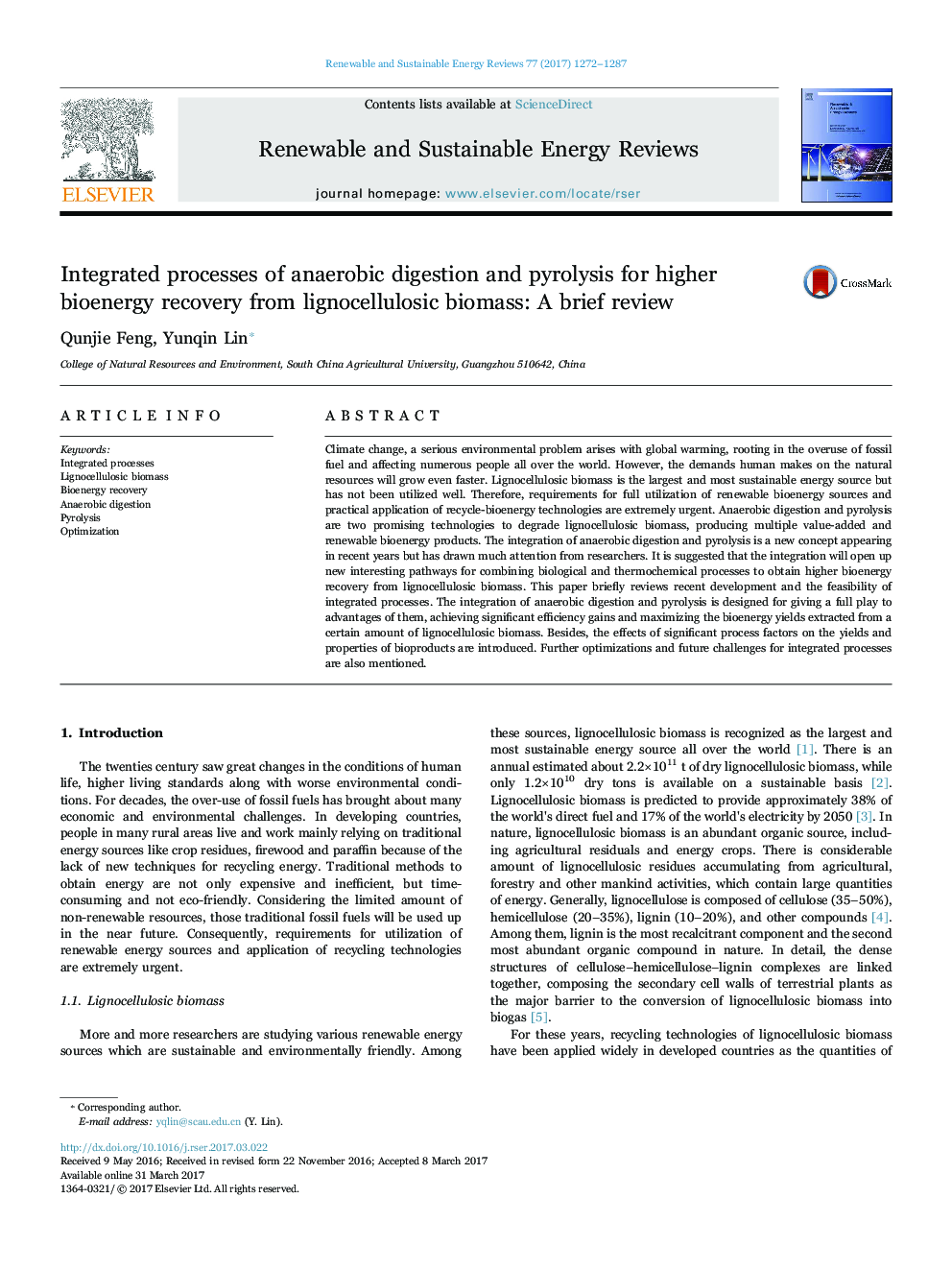| Article ID | Journal | Published Year | Pages | File Type |
|---|---|---|---|---|
| 5483008 | Renewable and Sustainable Energy Reviews | 2017 | 16 Pages |
Abstract
Climate change, a serious environmental problem arises with global warming, rooting in the overuse of fossil fuel and affecting numerous people all over the world. However, the demands human makes on the natural resources will grow even faster. Lignocellulosic biomass is the largest and most sustainable energy source but has not been utilized well. Therefore, requirements for full utilization of renewable bioenergy sources and practical application of recycle-bioenergy technologies are extremely urgent. Anaerobic digestion and pyrolysis are two promising technologies to degrade lignocellulosic biomass, producing multiple value-added and renewable bioenergy products. The integration of anaerobic digestion and pyrolysis is a new concept appearing in recent years but has drawn much attention from researchers. It is suggested that the integration will open up new interesting pathways for combining biological and thermochemical processes to obtain higher bioenergy recovery from lignocellulosic biomass. This paper briefly reviews recent development and the feasibility of integrated processes. The integration of anaerobic digestion and pyrolysis is designed for giving a full play to advantages of them, achieving significant efficiency gains and maximizing the bioenergy yields extracted from a certain amount of lignocellulosic biomass. Besides, the effects of significant process factors on the yields and properties of bioproducts are introduced. Further optimizations and future challenges for integrated processes are also mentioned.
Keywords
Related Topics
Physical Sciences and Engineering
Energy
Renewable Energy, Sustainability and the Environment
Authors
Qunjie Feng, Yunqin Lin,
